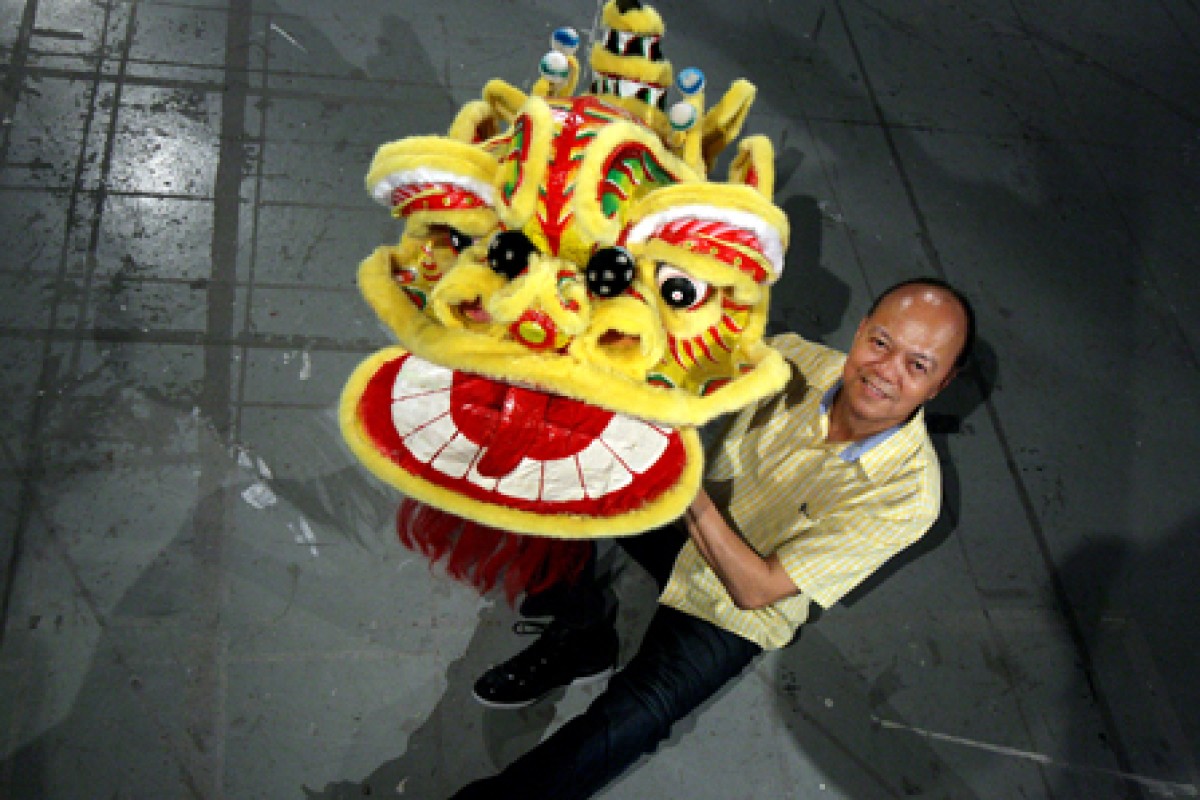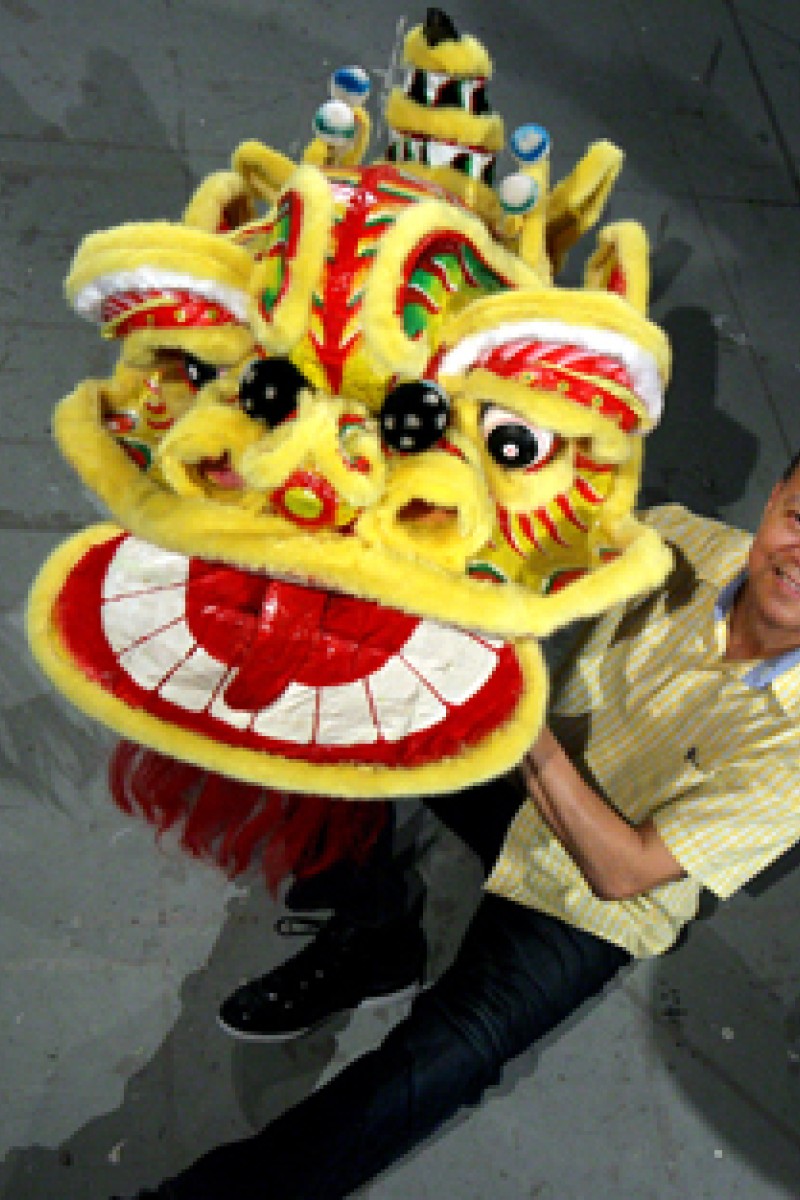 Paul Chan displays one of the traditional lion heads he has made.
Paul Chan displays one of the traditional lion heads he has made."Sometimes we would try to surprise him when he came home," explains the now 62-year-old Chan. "We would try to complete half the work he wanted to finish that night. Doing that was a lot of fun for the whole family."
Bun had another artistic talent: he made lion heads, the ones used at lion dances, and sold them at the shop. However, at the time, Chan never learned how to make them. Making lion heads is more complicated. It was not until he returned from the US, in his late 50s, that he asked his father to teach him how to create lion heads.
"He was very surprised and happy, because his technique would be passed down to his son and possibly spread to the community," recalls Chan. "When I came back to Hong Kong, I knew I wanted to do something involved with Chinese heritage, something passed down from my family. So that's why I started to learn how to make lion heads."
Chan lived and worked on and off in the US for 13 years. He ran a Chinese restaurant and was a guest lecturer for Chinese cultural affairs at various schools. You might even say he was a bit of a local celebrity, twice given a citizen award and once given the key to the city of Greer, in South Carolina. And he's got the photos to prove it.
Today, Chan is retired and lives in Hong Kong. He's never forgotten how to make Big Head Buddhas. Nor has he lost the desire to spread Chinese culture to youngsters. He conducts workshops to teach students how to make Big Head Buddhas and lion heads.
His most recent workshop was at HKICC Lee Shau Kee School of Creativity, where he taught a Form Four class how to make lion heads. Students teamed up, working on different sections to come up with one single lion head.
"The most difficult part is the frame," explains Chan. Bamboo sticks are tied together with bamboo skin, or string, in the shape of a "D" to form the frame. He continues: "Twisting the bamboo skin to create different angles is not easy. It's one of the most important things to help secure the sticks."
After making the frame, metal wiring is added for reinforcement. Glue is then applied to strips of paper, which are placed on top of each other to form a solid layer of skin. By adding and adjusting layers of paper, shapes are formed to create the outlines of the head, cheeks, eyes and ears.
The inside of the lion head has strings attached to metal wires that operate the eyes, ears and jaw. A tug here or there makes them move. The final touch involves painting the outer layer and adding decorations.
Today the small paper shop in Central no longer exists. Chan guesses the place that gave birth to countless lion heads was torn down more than 20 years ago. He hopes to preserve that part of our heritage by passing down the knowledge endowed to him by his father - though he's unlikely to receive a key to our city.
